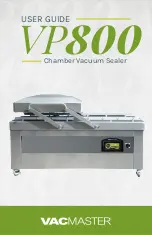
13
Wok function
en
Cooking table
The table shows which heat setting is suitable for each
type of food. The cooking time may vary depending on
the type, weight, thickness and quality of the food.
-
Wok function
Wok function
The wok function is only to be used with the wok pan
and wok accessories; it is not suitable for other types of
cookware.
Wok and wok accessories
(Not included with the appliance)
Wok pans and wok pan supports can be purchased from
our sales partners Gaggenau.
Because the base of the wok pan is round, it can only be
used with a wok pan support.
Make sure the wok is properly positioned on the wok
pan support when using it for cooking. Always position
the wok pan support in the centre of the hotplate.
Do not heat the wok up when it is empty.
Use a special curved turner (chan) or a long-handled
wooden turner.
Use a ladle to spoon the food out of the pan. The
easiest way to spoon out food cooked in hot fat or large
quantities of sauce is with a skimming ladle.
Use a bamboo steamer for steaming.
Notes
–
Use the wok and wok pan support in conjunction
with the wok function only.
–
Do not clean the wok pan support in the
dishwasher.
Cooking with the wok
Sautéing is one of the most popular cooking methods to
use with a wok. The ingredients are cut small and
cooked very quickly at a high temperature, with constant
stirring. The large, round-bottomed pan allows you to
stir all the ingredients easily and quickly and turn them
as you would in a normal frying pan. Stirring prevents
the ingredients from sticking to the pan. Any excess fat
collects in the centre of the pan. The meat pores will
close and the meat will remain succulent. Vegetables
will remain crunchy. The flavour and vitamins will be
retained.
Note:
The wok allows you to cook more quickly than
with a conventional frying pan. For this reason, all the
ingredients should be prepared before you start
cooking. The order in which the ingredients are added
is equally important: Ingredients that take longer to
cook (high-fibre vegetables such as carrots) should be
added first, and ingredients with a shorter cooking time
(e.g. mushrooms, bean sprouts) should not be added
until the end.
Heat
setting
Cooking methods Examples
11
- 12
Parboiling
Water
Searing
Meat
Heating
Fat/oil, liquids
Bringing to the boil Soups, sauces
Blanching
Vegetables
7
- 10
Frying
Meat, potatoes
6
- 8
Frying
Fish
8
- 9
Baking
Flour-based and/or egg-
based dishes, e.g. pan-
cakes
Simmering in an
uncovered dish
Dough-based foods, liq-
uids
7
- 8
Browning
Flour, onions
Toasting
Almonds, breadcrumbs
Rendering
Bacon
Reducing
Stocks, sauces
6
- 7
Poaching in an
uncovered dish
Dumplings, soup vegeta-
bles, soup meat, poached
eggs
5
- 6
Poaching in an
uncovered dish
Boiled sausages
6
- 7
Steaming
Vegetables, potatoes, fish
Stewing
Vegetables, fruit, fish
Braising
Roulade, roasts, vegeta-
bles
3
- 4
Braising
Goulash
4
- 5
Cooking with the
lid on
Soups, sauces
3
- 4
Defrosting
Frozen products
Soaking
Rice, pulses, vegetables
Thickening
Egg-based dishes, e.g.
omelette
1
- 2
Heating/keeping
warm
Soup, vegetables in sauce
1
Heating/keeping
warm
Stews
Melting
Butter, chocolate
Содержание VI 414 103
Страница 1: ...Instruction manual VI 414 103 VI 414 113 Induction wok...
Страница 2: ...2...
Страница 31: ......
Страница 32: ...DJJHQDX DXVJHUlWH PE DUO HU 6WUD H 0 QFKHQ 50 1 ZZZ JDJJHQDX FRP 9001461812 9001461812 991203 en...














































